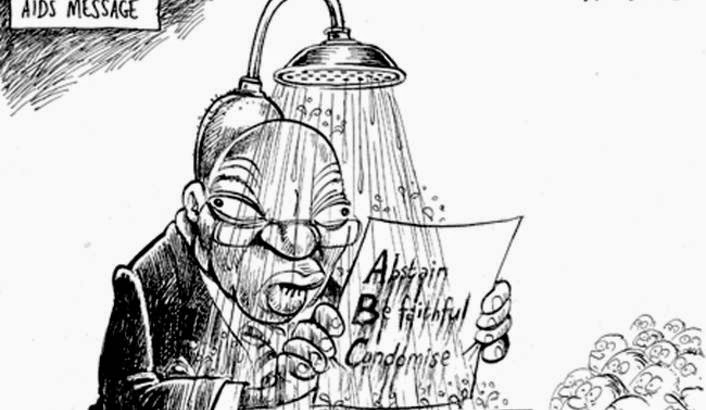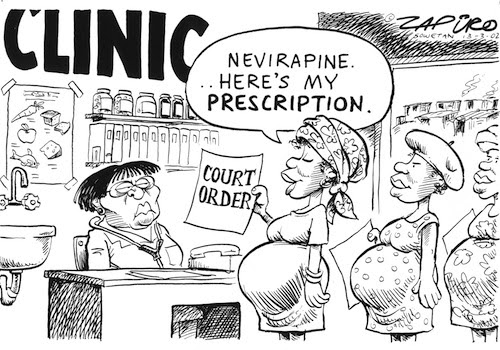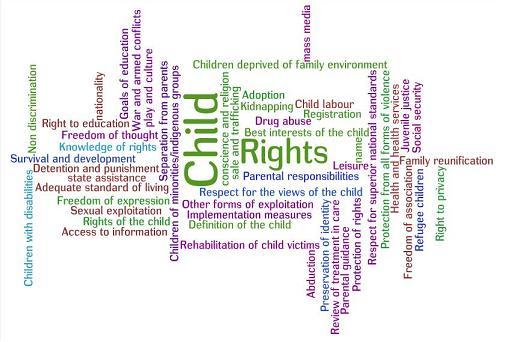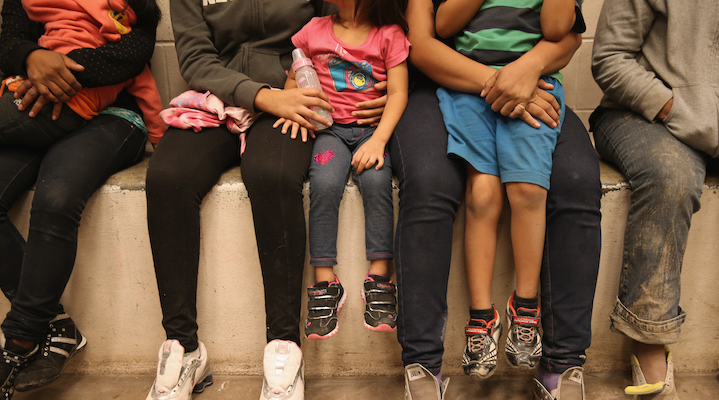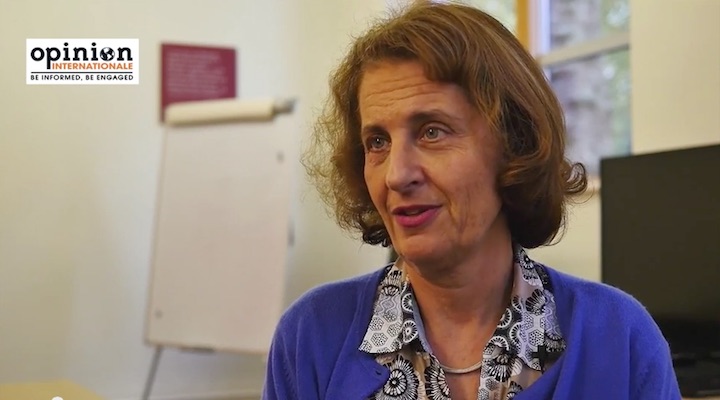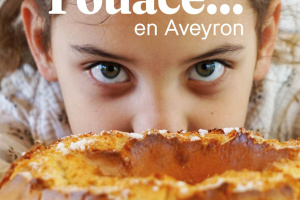Anybody who reads the news in South Africa is accustomed to see president Jacob Zuma represented with a shower attached to his head. Since 2006, he never goes without it. That is when the cartoonist Jonathan Shapiro, better known as Zapiro, decided to use that image after Zuma said during his rape trial that he had sought to prevent himself from contracting HIV by showering after having sex with his accuser. What has become a national joke, and cost Zapiro a trial, ends up not being funny at all.
At the end of the 1990s, HIV/AIDS was tearing at the very fabric of South African society, breaking apart families and communities through death, fear and stigma. At the time, South Africa’s president Thabo Mbeki was altogether denying the causes of the epidemic. Today, even if his successor, Jacob Zuma, has taken full measure of the challenge and seriously tackled the problem through tremendous efforts, the image of him with a shower constantly reminds us how big the issue remains in South Africa. And all the more so because today, it is South Africa’s children who could be the ones paying the highest price of the still very widespread disease.
20% of children live in child- or youth-headed households in South Africa
Each year, about 400,000 new HIV infections and an estimated 88,000 AIDS-related deaths occur in South Africa. One of the results of these daunting statistics is that over one million children have been orphaned by HIV/AIDS (see box below on HIV vs. AIDS); consequently child- or youth-headed households in South Africa are home to 20 per cent of all children, according to Statistics SA. This means some 4.3 million children live in homes unsupervised by adults, largely due to the numbers of parents who have succumbed to HIV/AIDS.
The harm imposed on children’s welfare through high HIV and AIDS prevalence goes well beyond the risk of disease transmission and the loss to household income from the passing of a wage earner; it extends to the child’s psychological wellbeing and socio-emotional development.
In a study undertaken in Masiphumelele, an informal settlement outside Cape Town, researchers describe the inability of a mother to engage socially with her children due to her AIDS induced weakness. Poorer childcare due to adult morbidity impedes on a child’s socio-emotional development – which relies on active engagement, play and nurturing by adults – that is required for overall human capital development.
AIDS infection is associated with “negative parenting” as infected parents are less attentive to their children, provide less stimulation and are less encouraging than non-infected parents. A further implication of having an HIV infected parent in the home is the potential for a shift onto the child of the household duties a sick adult is unable to perform.
Interviews with South African AIDS orphans reveal that stigma around the disease remains widespread and that children orphaned through AIDS are highly likely to suffer social exclusion, reduced concentration in school and a higher risk of contracting HIV through caring for an infected caregiver.
Rights enshrined in the law must be effective …
The South African Constitution and much of its legislation addressing children’s needs is regarded as world class, providing eloquent, explicit and more than satisfactory guarantees of children’s rights. These national laws reflect the spirit of all the relevant international instruments that have been ratified by South Africa, including the UN Convention on the Rights of the Child and the African Charter on the Rights and Welfare of the Child.
However, laws and conventions will always remain words on paper if they are not taken seriously by governments and implemented in good faith. The unfortunate reality is that in South Africa there are still many children whose basic rights are yet to be realised.
Of course, since Jacob Zuma is in power and despite his “shower” reputation, South Africa has turned its disastrous policy around and made huge efforts to address the HIV/AIDS issue. But today statistics are still appalling and more importantly – although unsurprisingly – an enormous gap exists between those children who live in poverty and those who live in affluence. Efficient and effective service delivery still has a long way to go towards closing this gap.
As one of the principles for effective implementation of human rights, equity demands that government-funded programmes and services specifically address the needs of all children and ensure that they enjoy the right to equality of opportunity in life.
Lindiwe Mokate, Commissioner to the South African Human Rights Commission, reminds the government that “those who are tasked with the responsibility of providing services to our children are not merely involved in an act of kindness but rather the delivery of inalienable human rights to children.”
And “justiciable”
Governments must definitely be reminded of their responsibilities, but effective rights also depend on civil society and private funding. Early November the Treatment Action Campaign (TAC), an NGO that has long represented a beacon of hope for many South Africans suffering with HIV and AIDS, announced that it was threatening to close its doors within a month because of a severe budget shortfall.
TAC supporters say the fight against HIV/AIDS has not become any easier. Today, an estimated six million South Africans are infected, and the organisation estimates that 500 people die every day. In a perverse way, the group is a victim of South Africa’s success: now that it is a middle-income country, major foreign donors have pulled back.
TAC is known throughout the world for its AIDS activism and its successful civil disobedience campaigns during the early 2000s, which forced the government to make antiretroviral treatment available to South Africans. The TAC confronted the South African government for not ensuring that mother-to-child-transmission prevention was available to pregnant mothers. It won this case on the basis of the South African constitutional guarantee of the right to health care.
Proof, if need be, that laws and international conventions on human rights are becoming increasingly “justiciable”: The possibility for alleged victims of violations of such rights to file a complaint before an impartial body and request adequate remedies or redress is indeed becoming part of the legal horizon. The TAC’s case against the South African government involved whether, and how to give effect to children’s constitutional socio-economic rights.
Yet, without new funding the TAC will close and many other civil society organizations have already died. It would be tragic if the TAC faded away: it is a shining example of people’s power in action and of the need of children’s rights to be defended.
HIV is a Virus
HIV is a virus and particular exposure to it can lead to infection. HIV stands for Human Immunodeficiency Virus. The name describes the virus: it infects humans only and it attacks the immune system, rendering it deficient and unable to work as effectively as it should.
Unlike many other viruses, our immune systems are unable to attack and completely clear out HIV. No one yet understands why we cannot defeat HIV, but medications can control it very successfully.
AIDS is a Condition
While HIV is a virus that may cause an infection, AIDS is a condition or a syndrome. Being infected with HIV can lead to having AIDS, which stands for Acquired Immunodeficiency Syndrome.
AIDS develops when HIV has caused serious damage to the immune system. It is a complex condition with symptoms that vary by individual. Symptoms of AIDS are related to the infections a person develops as a result of having a damaged immune system, unable to fight infections as it would in a healthy individual. These may include tuberculosis, pneumonia, certain types of cancer, and other infections.





